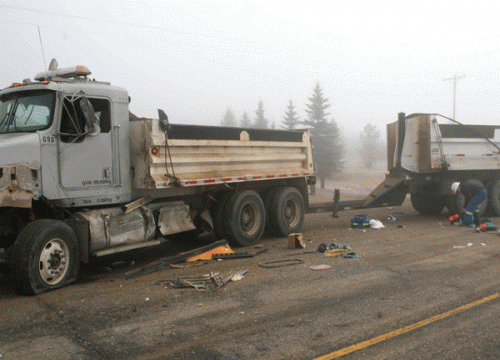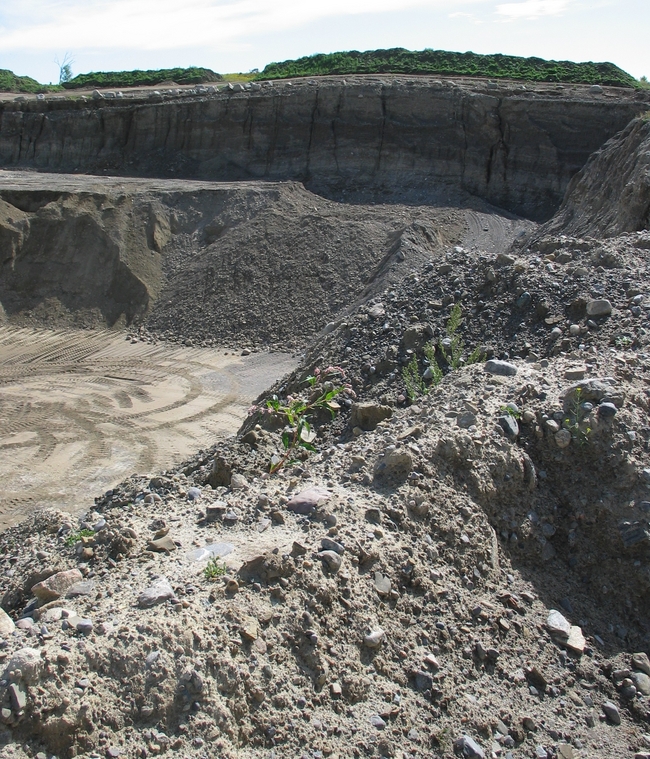PitSense is a community of people organized to respond to proposals for further increases in the number and size of aggregate operations in Caledon.
We are opposed to the continuing 'Domino Effect' growth of open pit mines and quarries in the agricultural and rural residential areas of the Niagara Escarpment and UNESCO World Biosphere Reserve.
ISSUES & IMPACTS
"... a proponent of development has the onus of demonstrating no negative impact. Objectors to a development need not demonstrate that there will be negative impact."
..... SUSAN B. CAMPBELL, VICE CHAIR, Ontario Municipal Board, Rockfort Quarry ruling
When the people become involved in their government, government becomes more accountable, and our society is stronger, more compassionate, and better prepared for the challenges of the future.
... Arnold Schwarzenegger
It is no longer adequate to simply mitigate environmental or social impact for economic benefit. A corporation has to prove it is leaving behind a visible and tangible improvement in the environment and in the social fabric of the community."
...Alan Kreisberg, President, Western North America LaFarge Construction
ISSUE: PRECAUTIONARY PRINCIPLE
Website, Links and discussion of the 'Precautionary Principle' that is gaining importance in matters of environmental protection - from Science and Environmental Health Network.
A superb resource.
https://www.sehn.org/canpre.html
IMPACT: AIR QUALITY
Air quality issues are a major concern, both for local area residents and any communities downwind of an operational pit or quarry. Furthermore, the Fine Particulate Matter from diesel transport affects all areas in proximity to or affected by haul routes. Rail and ship transport of aggregates are not only more economical than truck transport but also contribute less to air contamination. ... more: click here
IMPACT: CALEDON C4SE STUDY
A study done by The Centre For Spatial Economics for the Town of Caledon in which the potential negative economic impacts on property values are extensively discussed.
Ontario's Environmental Commissioner said in his 2004/2005 findings: "The environmental problems with aggregate extraction are abundantly documented. The need for stronger environmental protection is clear."
http://www.greenbeltalliance.ca/?q=node/34
ISSUE: WATER
Ancient glaciers made the Greenbelt/ Niagara
Escarpment/ Oak Ridges Moraine one of the major
sources of water for the Greater Toronto Area,
Golden Horseshoe, and Great Lakes. Ground source
water is not a very well-understood resource.
Where it comes from, where it goes, and how it
can become disturbed or contaminated is a highly
speculative 'science'. (click HERE)
Copyright © 2010-2024 PitSense Niagara Escarpment Group Inc.
All rights reserved
ISSUE: Making ENVIRONMENTAL and ECONOMIC SENSE
PitSense is dedicated to bringing common sense to the relationship between aggregate industries and our community, our properties, our environment, and our governments.(Click HERE)
ISSUE: the BIRDS and the BEES
The negative impact on a long-standing honey operation neighbouring the proposed McCormick Pit is just one
example of the potential for detrimental consequences
and costs that could be imposed on the neighbouring community, without their consent! (click HERE)
ISSUE: The NEED for AGGREGATE
As presently written, theProvincial Policy Statement (PPS)
stipulates that the need for aggregate is not to be considered when evaluating an application for a new or expanded pit or quarry. It states: "Demonstration of need for mineral aggregate resources, including any type of supply/demand analysis, shall not be required, notwithstanding the availability, designation or licensing for extraction of mineral aggregate resources locally or elsewhere." (emphasis added)
PitSense believes this is a serious flaw in the
regulation that must be rectified.
PitSense endorses the Policy on Aggregate Extraction outlined by the Coalition of the Niagara Escarpment (CONE), which can be seen HERE.
ISSUE: ALTERNATIVES
As Bob Dylan once said: "The Times They Are A-Changing". Our awakened environmental concerns and our new awareness of the costs, both social and economic, of the traditional relationship between the Aggregate Industries and society require us to do some fundamental re-thinking. Pitsense believes that a new and comprehensive Model for Aggregate Extraction needs to be developed. (click HERE)
ISSUE: REHABILITATION of PITS
Pits and quarries eventually become depleted of resources, perhaps after 40 or 50 years of extraction. They are then supposed to be rehabilitated. So how are we doing in that regard? (click HERE)
IMPACT: SAFETY
In the 2018 re-application the proposed HAUL ROUTE for the McCormick Pit is west through the adjacent James Dick Pit to a conveyor belt passing under Kennedy Road and from there to Hwy 10. Any additional production from the McCormick site would be added to the already substantial number of loads from the JDCL sites. These loads would add to the truck traffic on Charleston Sideroad and Airport Rd and potentially to other north-south roads that are already designated as "Primary Truck Routes' on Regional mapping, such as Horseshoe Hill Rd.. More importantly there would be serious safety concerns with the
existing users of the area roads such
as pedestrians, cyclists, local
motorists, and school buses.
(click HERE) Click image
to enlarge
IMPACT: LOSS OF AGRICULTURAL LAND
At a Provincial Government Review Hearing (May, 2012) the Ontario Federation of Agriculture made a strong presentation calling for the preservation of valuable farmland. They said: "From an agricultural perspective, the Aggregates Resources Act is in dire need of more balance with due consideration of our soil as a strategic resource to be protected."
For full article and links click HERE
ISSUE: FINANCIAL ASSURANCE AGREEMENTS
The use of Financial Assurance is a time-tested concept. Its application is neither new nor confined to the mining industry or environmental problems. Mandatory automobile insurance and minimum capital requirements for banks share similar motivations: namely, the desire for victim compensation and the deterrence of inappropriate risk-taking. In terms of their environmental application, assurance has been advocated for decades as a complement to environmental law and regulation.
Application of the same concepts in mitigation of and compensation for the negative effects of aggregate operations fits well with the call for 'Full Cost Accounting'.
In concrete terms, financial responsibility ensures that the expected environmental, economic and social costs will appear on a firm’s balance sheets and in its business calculations. If new investments imply possible future costs, financial responsibility increases the relevance of these costs to a firm’s decision-making.
In fact, the Ontario Environmental Protection Act guidelines state: "Financial Assurance should be required for facilities listed in Sections 4.4.1 to 4.4.5 if any of the following situations apply, which should be specified in the order or approval file as reason(s), including:
a) Where a required action, process or task could result in adverse effects, such as increased health or environmental risks, contamination of or interference with the operation and use of municipal or private wells, or hazards to public health and safety."
The guidelines also state that FAA's should apply where: "Permits to take water under section 34, OWRA where there is the expectation of associated adverse effects on:
a) Other known users of the same surface or ground water supply source;
b) The environment, such as low flows in streams, etc.;
c) Surrounding properties which take water from the same ground water supply ..."
Similar provisions need to be applied in aggregate legislation and policies.
ISSUE: RECYCLING
The provincial government recently held hearings to review the Aggregate Resources Act (ARA).One of the most often heard suggestions was to dramatically increase the recycling of aggregates. In this regard Ontario lags far behind other countries in the world. This is because of the availability of cheap virgin aggregates and the virtual absence of economic incentives to recycle.
The politicians were very receptive to the idea, and we at PitSense agree, HOWEVER we are not in favor of recycling facilities as an integral part of pit and quarry operations. Reprocessing of demolition debris is an on-going and expanding CLASS 3 INDUSTRIAL operation, not an "interim" land use. There are unique and serious issues with pollution and other toxic emissions. In most cases such facilities are not suited to the locations of pits and quarries because pit locations are in environmentally and socially sensitive areas, not industrial areas.
WE ARE URGING CAUTION! The ARA does not provide guidance in this area, nor does the Ministry of Natural Resources have suitable supervisory capabilities.
More about RECYCLING HERE






